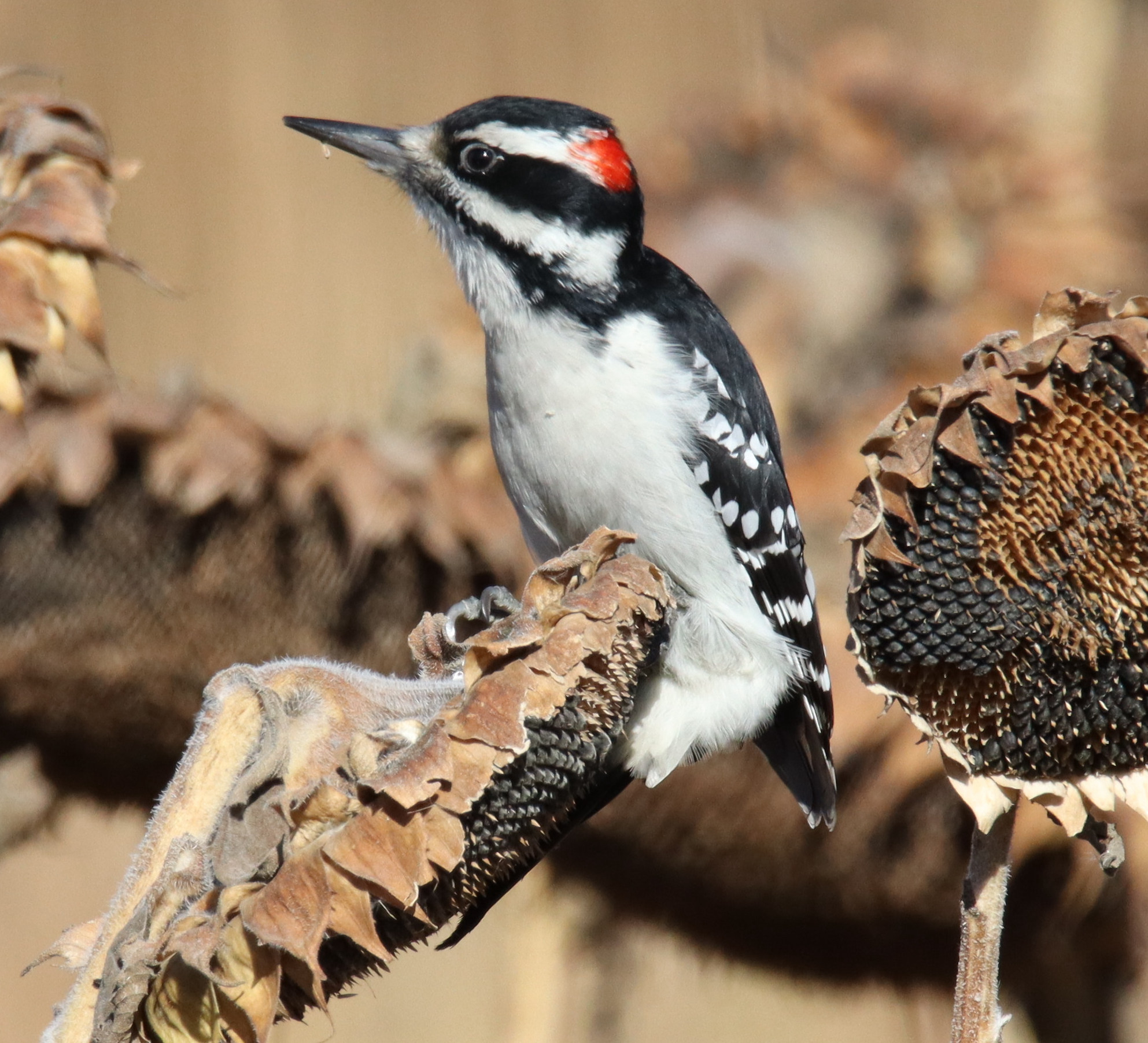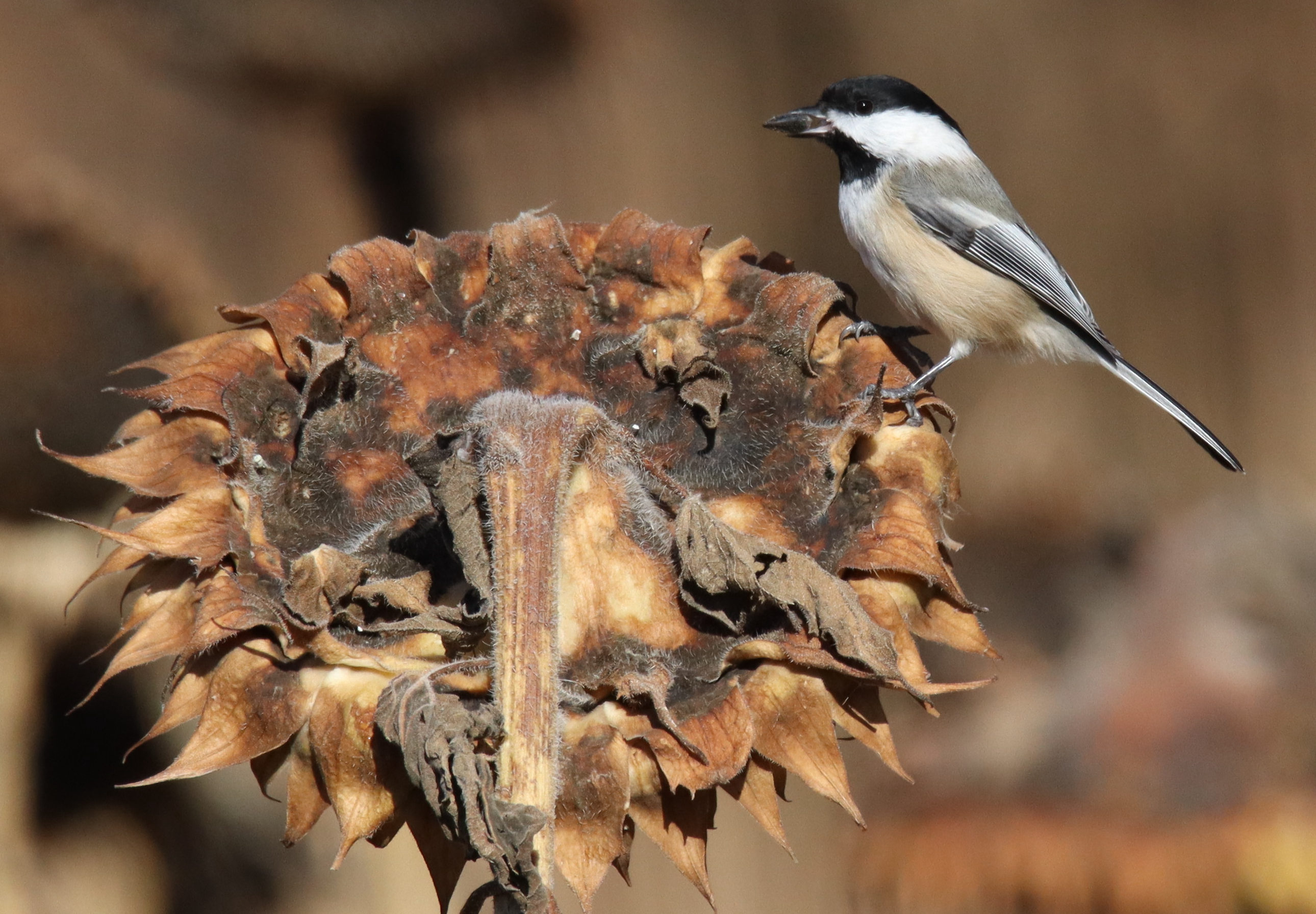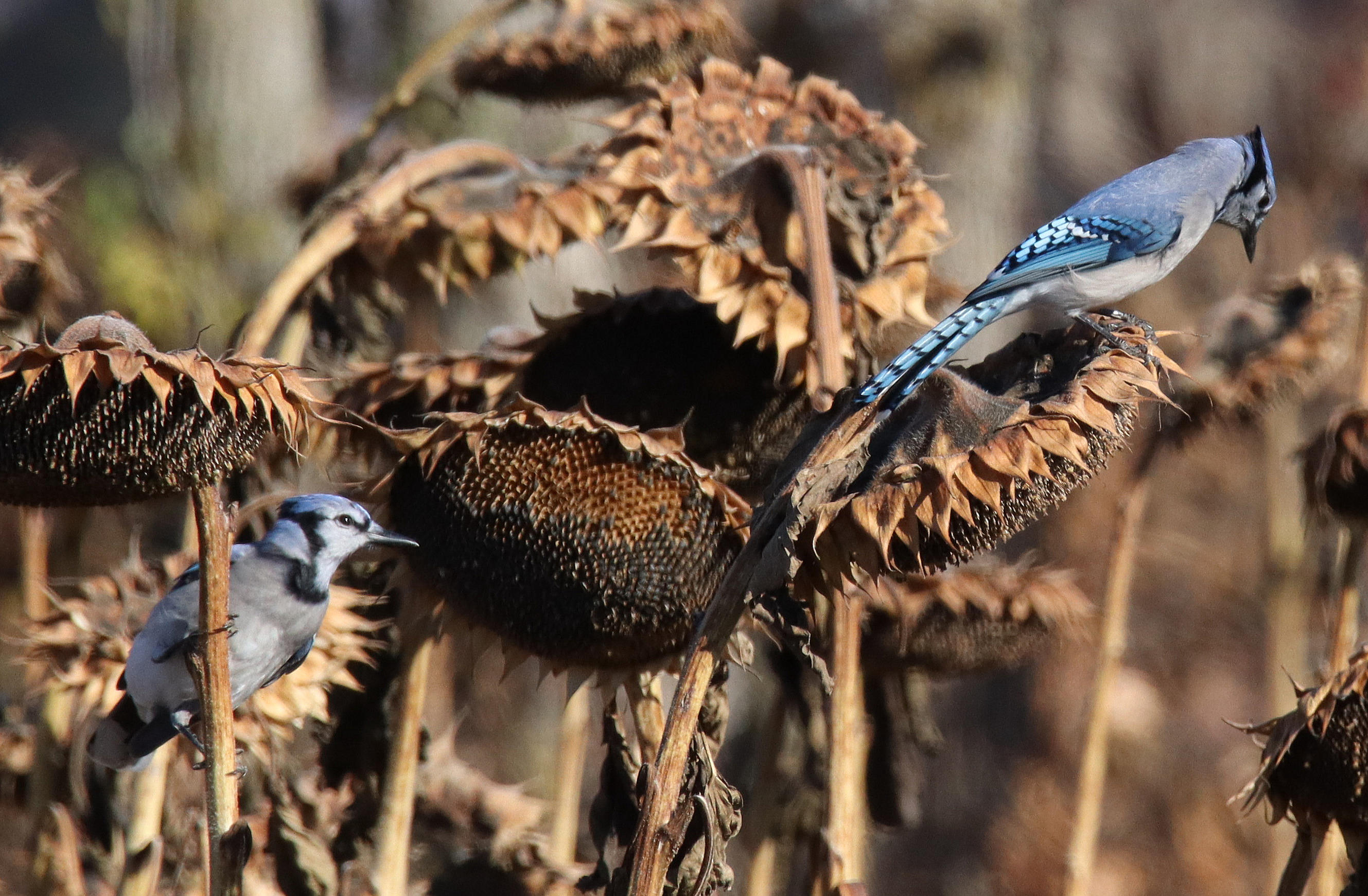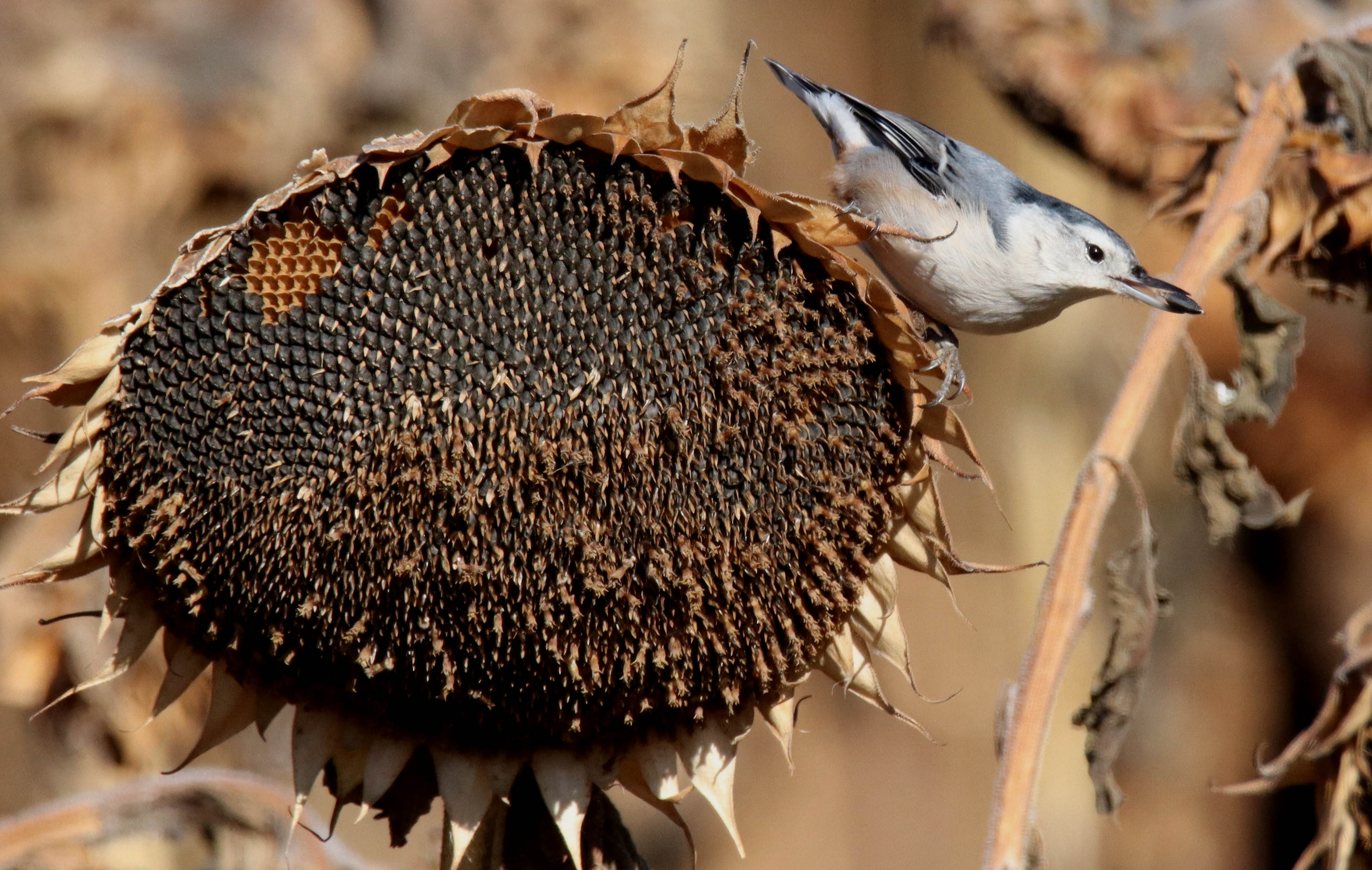
During the short sunflower photo sessions, Hairy Woodpeckers were among the most common birds to feed on the oversized seed heads.

With a seed in its beak, a Black-capped Chickadee shows the large size of the black-oil sunflower seed heads, held in position by a strong stem that held the seeds 5 to 6 feet high.

As they flew to the edge of the sunflower field 2 Blue Jays tipped off the action at the mega Minnesota feeding station.

With lots more seeds where that one came from, the White-breasted Nuthatch flew into the woods, probably to cache the seed before returning.
|
A most unexpected discovery began with the simple sighting of a pair of Blue Jays landing to feed on black oil sunflower seeds, but this was no normal feeding station. The jays added a blue splash of color as they landed on top of 2 large sunflower seed heads. A closer inspection of the scene revealed other birds were on hand too – a variety of eastern feeder birds including Black-capped Chickadees, American Goldfinches, White-breasted Nuthatches, a Common Grackle, Hairy Woodpeckers, Downy Woodpeckers, and the Blue Jays!
Each bird was landing on an individual oversized sunflower head and feeding on individual seeds while perching on the big seed head, or taking individual seeds to another location to shell and eat each seed, or cache it, then return to the biggest bird feeding station! Indeed, I was watching the songbird action from the southeast corner of an 80 acre sunflower field, surrounded by Minnesota woodlands, providing habitat, shelter, and a never-ending supply of high-quality food.
At first it was exciting to see each new species appear and realized it was a rather unique opportunity to photograph “feeder birds,” so spent some time in my mobile blind on the side of the unused dirt road (unused while I was there). Two months earlier this field would have provided beautiful landscape photos when the huge sunflower heads were blooming with vibrant yellow petals surrounding each of the seed heads. Now they were dried, brown lifeless sunflower skeletons still standing 5 feet tall, but with their heavy seed-laden heads bowing down from the weight. Now it was a sunflower graveyard, but it was filled with high-protein, high-calorie foods for a variety of lively birds.
Woodpeckers provided the most photo ops, the Downys and Hairys, but Black-capped Chickadees became active too. In all, I noted 2 Blue Jays, 3 Downy Woodpeckers, 2 Hairy Woodpeckers, 4 Black-capped Chickadees, 5 American Goldfinches, 1 White-breasted Nuthatch, and a Common Grackle. There were also American Robins along the sunflower-woodland edge, and occasional American Crows, but neither species landed among the sunflowers. What a nice little hotspot.
Some birds, most notably the nuthatch, chickadees, and jays were caching some seeds, not a bad plan considering that the field may soon be harvested, thereby destroying the field as it stands now. But even when the huge crop of seeds passes through a combine, the ground will be littered with a surprising amount of waste seeds. Those seeds will continue to feed songbirds, possibly even more birds than when I observed them. And the field will be “opened” for easier access for even more birds and other animals; other birds may include Ring-necked Pheasants, Mallards, Canada Geese, or even some northern finches and native sparrows, considering all the seeds will be at ground level then.
While this observation creates an interesting story, it also provides some insight into the connection between popular feeder visitors and the best winter food for seed-eating birds – black-oil sunflower seeds. And it underlines the potential for planting sunflowers in your yard. For me, it was another look at how backyard birding and field birding are always interconnected – birders are birders, at home and in the field. It also provided a chance to document these songbirds feeding in a sunflower field – I guess they just couldn’t wait to have the seeds harvested, packaged, and shipped, eventually making it to a feeder near them – ha-ha.
The next time you see a sunflower field, give it a second look; if the larger, brightly colored Blue Jays hadn’t caught attention, I may have missed the chance to observe and photograph a small bit of the action at this Minnesota mega-feeder. Then too, I expected and saw some evidence of small birds flying into the sunflower field to feed farther north along the intersection of field and woods – chickadees, nuthatches, and more. So who knows how many songbirds were benefitting from this field of sunflowers.
Enjoy the birds around you as the fall season progresses. Make black-oil sunflower seeds the staple of your feeding station, along with suet, thistle seeds, and fresh water to attract an exciting array of birds north of the Sunbelt. In warmer areas, birders have even more bird feeding options and an even greater variety of birds to attract, but keep black oil sunflowers a stable to attract seed-eating birds – good luck!
Article and Photos by Paul Konrad
Share your backyard birding experiences and photos with The Birding Wire at editorstbw2@gmail.com